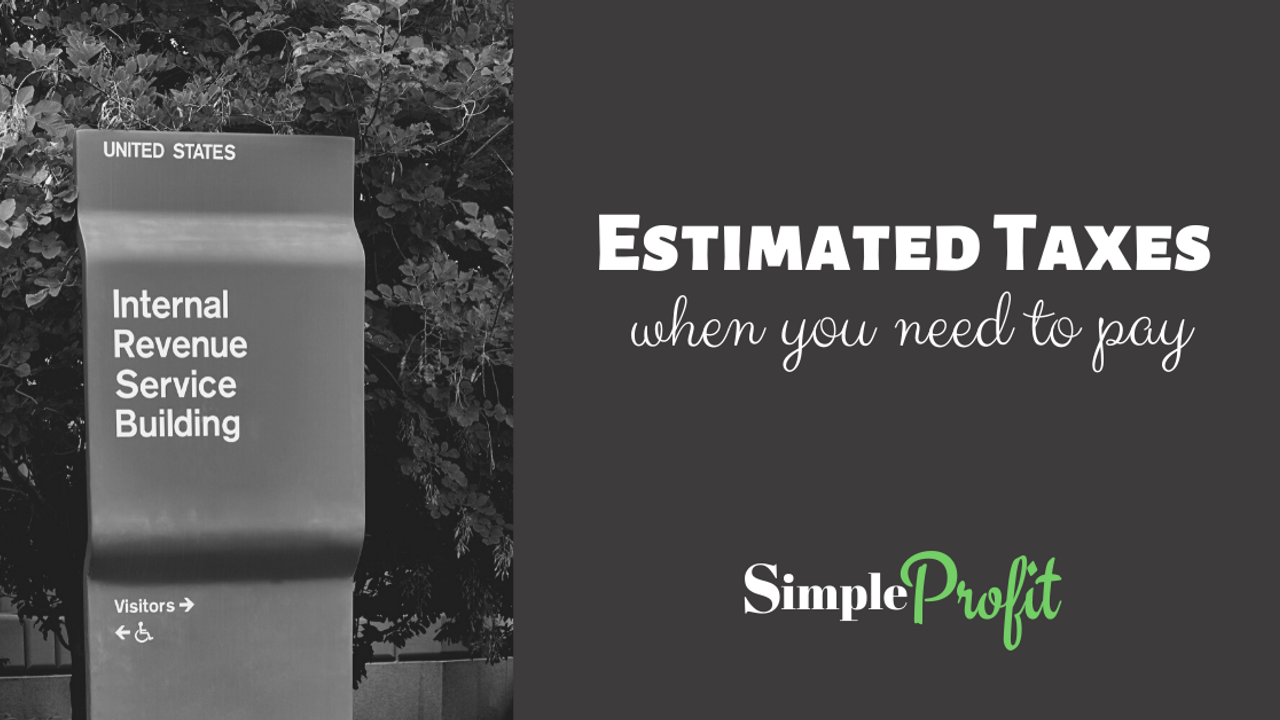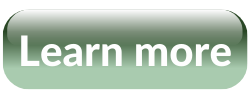Estimated Taxes: When You Need to Pay

If you have recently started a business you may be wondering what you need to know about paying estimated taxes. Read below to learn when to start worrying about them and when they are due.
Most of us are familiar with how tax withholding works when we are an employee. We get a paycheck, the employer withholds some money, we get what is left. When we file our year-end tax return we either get a refund if too much money was taken from our paycheck or we owe extra tax if not enough was withheld.
When we are self-employed it is a similar process. Unlike an employee though, we are responsible for calculating how much tax to pay in and making the actual payment too. The rest is the same. We still file a tax return at year end to see if we paid too little or too much.
Total tax
Our total tax liability represents the amount paid in during the year PLUS the amount we owe at year-end on our tax return or MINUS the refund. Consider this example:
$5,600 tax paid in during the year
+$1,000 tax due with the April 15 tax return
=$6,600 total tax
If the taxpayer had paid $5,600 in tax during the year and then received a $500 refund, their total tax would be $5,100. It means they really owed $5,100 and because they paid $5,600 they got $500 back from the government.
New businesses
Many mistakenly believe that if you start a new business you do not need to make any estimated tax payments the first year. This is not necessarily accurate. You may owe estimated tax the first year in business if you owed tax in the prior year from any source.
If you have switched from a job to self-employment, and you expect to make about the same money that you can at least pay the same tax you paid last year. Meaning if your total tax last year was $5,100, and you pay $5,100 this year again, there will be no penalty for paying too little. No penalty, even though if you earned a higher income you could end up owing way more than $5,100.
If you had no job and no business in the prior year, and had to pay $0 in tax all year and $0 at tax time, then your prior year total tax liability was $0. If that is your situation, the government will not penalize you this year if you again pay $0 in tax during the year. However, the problem is still that you may get hit with a very large tax bill at tax time.
Unexpected tax bill
Having an unexpected, large tax due with your tax return can be financially devastating. Imagine you are used to getting a refund each year. Now you start a business, and because you are self-employed, there is nobody withholding tax for you. Things are great, business is going well and you have enough money to live on. But you are not setting aside money for tax each month.
You get to the end of the year knowing you are going to owe something. You are shocked to see the amount. You don't have the cash to pay it and you have to start an installment plan with the IRS and your state to pay the taxes each month, along with interest due.
Now you are trying to pay the prior year tax and don't have enough cash flow to save for the current year tax. Next year you will be stuck in the same problem, paying the prior year tax and not having enough to save for the current year tax. It can take years to perhaps a decade to catch up.
All this can be prevented by saving for taxes early on. As soon as your new business begins having a profit, start saving some of the profit you earned each month. Even if you had no tax liability the prior year and won't get a penalty, still set some money aside in savings. Developing this habit early will make taxes less painful in the long run.
Estimated taxes
The IRS expects most self-employed business owner to begin paying estimated taxes at the point you expect to owe $1,000 or more in federal tax for the year. Most states with income tax have similar rules. You can pay the tax in four equal estimated payments or you can pay variable amounts of estimated tax based on what you actually earn in each quarter.
Anyone can pay estimated tax, even employees or those with investment income. The IRS wants any taxpayer to pay estimated tax if doing so will keep them from significantly underpaying the tax during the year.
Personal tax
Estimated taxes are for paying personal tax. If your business is a sole proprietor, LLC or S-Corp, you have a pass-through business entity. That means the business itself does not pay income tax. The net profit of the business passes through to the owner and the tax is calculated on the owners individual 1040 tax return.
This means that when you pay estimated taxes, it's personal not business. You do not pay under your business EIN, you pay under your social security number or your spouses social security number. It can be easier to use the social of whoever comes first on a joint return. If you try to pay under an EIN, you won't find that option exists. Estimated income taxes are always personal paid under a social security number.
You can pay your tax directly from a personal checking or savings account. If you choose to pay your estimated tax from a business account, you will categorize that payment as an owners draw (sole proprietor or LLC) or owners distribution (S-Corp). It's the same as if you had withdrawn money from the business for yourself and sent it directly to the government.
Saving 30%
Many recommend saving 30% of your net business earnings for taxes. This is a decent general guideline. The issue is that taxes vary greatly from taxpayer to taxpayer. Federal income and self-employment tax rates could be as low as 15% or over 35%. There are 9 states with no state income tax and some states have tax as high as 9% or even 12%. Also some taxpayers will owe local income tax.
For this reason, it's a good idea to gain an understanding of your own income and tax situation. 30% will be too high for many small business owners, and it could be too low for some. More on this below under developing your estimate.
Penalty
Any taxpayer can get an underpayment penalty. Although the penalties tend to be small, they can be avoided by paying at least as much as the total tax on the prior year return (110% of prior year if earnings were over $150,000) or 90% of what is owed in the current year.
Due dates
The US federal government has four estimated tax due dates per year. These dates are the same in each year unless the government changes them, which we saw happen several times during the pandemic. The usual dates are:
April 15th pay 22.5% - 25% of what you owe for the year
June 15th total paid so far should be 45% - 50% of what you owe for the year
September 15th total paid so far should be 67.5% - 75% of what you owe for the year
January 15th total paid so far should be 90% - 100% of what you owe for the year
If the date falls on a weekend or holiday, the deadline moves to the next business day. For example, June 15, 2025 is a Saturday, so the deadline moves to Monday, June 16, 2025.
Many states have estimated tax deadlines that match the federal deadlines. To find your state rules, search on your browser the name of your state and "estimated tax deadline."
Missing a deadline
While there can be penalties for not paying enough in each quarter, the idea with estimated taxes is to do your best. Pay something. If you miss a deadline, pay what you can at the next deadline.
Developing your estimate
You have a few options for paying estimated tax. You could use the total tax from your prior year tax return. The problem is that if you earn more or less than the year before, your eventual tax due could be higher or lower. Many people use a tax professional to develop an estimate. Tax professionals often use the prior year tax divided by 4, which leads to the same problem, your actual tax on the tax return could be higher if your income is changing significantly. If the tax professional is not communicating with you throughout the year, they will not know what is happening with your business income in order to adjust the estimate. You can also just guess and see how it goes.
There is another option. As the business owner you are in the best position to know what is happening with your business income and adjust your tax estimate as the year progresses. Simple Profit has a tutorial to help you develop an estimate! This tutorial includes a downloadable spreadsheet to help you compare the prior year tax return to your current year estimated income, using the current tax tables. Estimates are unlikely to be perfect, but the tutorial will help you understand how to develop an estimate and keep a close eye on your earnings and taxes. As well as learn where to pay and help you keep track of your tax rates.

However you develop your estimate, think of this as a learning process. If you have never paid estimated tax before, pay something. Track it. See how it compares to what you end up owing and then adjust next year to develop a better estimate.
Although taxes are not fun, the process of estimating and paying tax is not as terrible as it may initially seem. As long as you keep your eyes open and spend a little time learning, you can get comfortable with this process and soon it will be no big deal.
Bottom line
Self-employed business owners need to be thinking about saving for taxes and paying in an estimated payment soon after the business starts to show a profit. Adopt a mindset that not all the money earned from your business is yours; some will go to the government. Be patient and use each year as a learning experience to do better the next year. Consider getting some professional help to develop your estimate, either from your tax professional or from the Simple Profit membership.
The Simple Profit membership provides support to business owners. Get the education and resources you need to make informed business decisions and establish quality business processes, including bookkeeping and cash management tasks.

